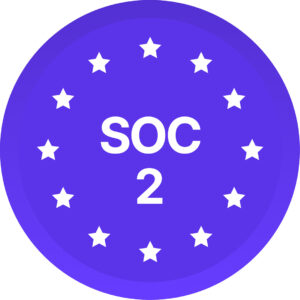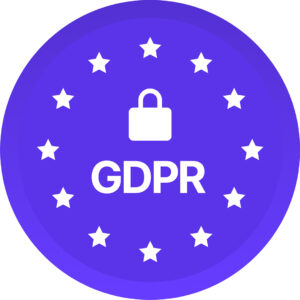We talk a lot about communication on my team. Not just about being clearer, but about making sure everyone actually feels seen when we’re speaking. Because here’s the thing: the words we use, whether in meetings, feedback sessions, or even casual Slack messages, have a bigger impact than we often realize.
Sometimes, without meaning to, the language we use shuts people out.
A moment that stuck with me
I’ve always used expressions like “when it rains, it pours,” “a dime a dozen,” or “bite the bullet” without giving them much thought. They’re just part of everyday conversation, right?
But I had a team member who recently immigrated from the Philippines, and I noticed something. During meetings or casual chats when I used those phrases, he’d often go quiet or seem to shut down. He never said anything directly about not understanding, but the change in his energy was clear.
It made me pause. How many times do we assume everyone shares the same cultural shorthand, only to find that some of those phrases actually create barriers instead of connection? That experience made me rethink how I communicate and reminded me that sometimes, the smallest things can make the biggest difference when it comes to inclusion.
Building trust through inclusive language
The words we use shape the environment we create. When people hear language that carries exclusion or bias whether they’re the target or just aware they can feel less safe, less comfortable, less willing to engage. Over time, that wears down trust and connection.
Think about your own team. How often have you noticed someone going quiet or stepping back from a discussion? Sometimes it’s not about the big issues or obvious conflicts, it’s about those small, constant signals that say, “Maybe this space isn’t for me.”
Research from Google’s Project Aristotle found that psychological safety is the top factor that sets successful teams apart. When team members don’t feel safe to express themselves due to exclusionary language, it directly impacts performance and innovation.
I’ve seen it happen on my team, and I’ve caught myself contributing to it without meaning to.
How inclusive communication makes a difference
Inclusive communication isn’t about being perfect or policing every word. It’s about being thoughtful.
It’s about slowing down and asking yourself:
- Who might this phrase exclude or hurt?
- Am I choosing words that welcome everyone, or just the people who look and sound like me?
- How can I say this in a way that’s clear, respectful, and open?
When I started paying attention to this, I noticed a difference. Conversations felt more open. People spoke up more. There was more curiosity and less fear of saying the wrong thing.
And that’s the kind of environment we want to build not just for diversity’s sake, but for performance. Research backs this up, too: teams where people feel psychologically safe and included outperform others by big margins.
What inclusive communication looks like day to day
Inclusive communication isn’t just avoiding certain words. It’s how you listen, how you respond, how you make space.
Here are some ways I try to practice it in my daily work:
- Check in often. After meetings or big discussions, I ask my team if anything felt off or uncomfortable. Sometimes, people will open up about language or behaviors I didn’t notice.
- Be curious, not defensive. When someone calls out a phrase or points out an issue, I try to listen first instead of explaining myself.
- Normalize questions and feedback. I encourage my team to ask questions or suggest alternatives without feeling like they’re “calling out” or making waves.
- Use inclusive language in all channels. That means email, chat, meetings, and even casual conversations. Consistency helps set the tone.
- Model humility and learning. I’m still learning every day, and I share that with my team. It’s okay to mess up and to adjust.
Looking to build these skills across your organization? Diversio offers inclusive communication workshop that help teams develop practical strategies for creating psychologically safe environments.
Why this matters beyond your team
Inclusive communication doesn’t just impact your direct reports, it ripples through your whole organization and even your clients. When your team feels safe and respected, they deliver better work. They collaborate more openly. They innovate.
Clients and partners notice, too. The way your team communicates externally reflects your company culture. That kind of authenticity builds stronger relationships and trust.
Owning accountability as a people manager
Let’s be real: none of us get it perfectly right all the time. I’ve certainly stumbled, maybe overshared too much at times or said something clunky that didn’t land well. But here’s what I’ve learned: being open about that messiness is part of what builds trust.
I take pride in being transparent with my team. Sometimes, that means sharing when I don’t have the perfect answer or even when I’ve made a mistake. That honesty creates space for them to do the same. It gives people the safety to call me out if my language or behavior misses the mark and believe me, it happens.
This two-way street of accountability isn’t about pointing fingers. It’s about continuous learning together. It’s about saying, “I might slip up, but I’m committed to listening and doing better.” And that commitment means more than any perfect phrase or checklist ever could.
Want to measure how inclusive communication is working in your organization? Diversio’s inclusion & engagement surveys help you gather anonymous feedback and track progress on psychological safety and belonging.
A few parting thoughts
No one expects you to get every word right all the time. What matters most is intention, effort, and showing up authentically. When you start paying attention to the language you use and own the times you miss the mark, you’re already making a difference.
Better language doesn’t just mean fewer mistakes. It means better leadership.
If you manage people, I want to leave you with this: you don’t have to get every word perfect or never make a mistake. But you do have to commit to showing up fully, listening deeply, and being willing to course-correct when you need to. That ongoing effort is what turns better language into better leadership.

